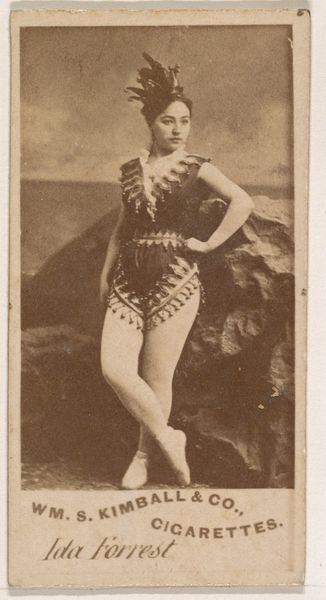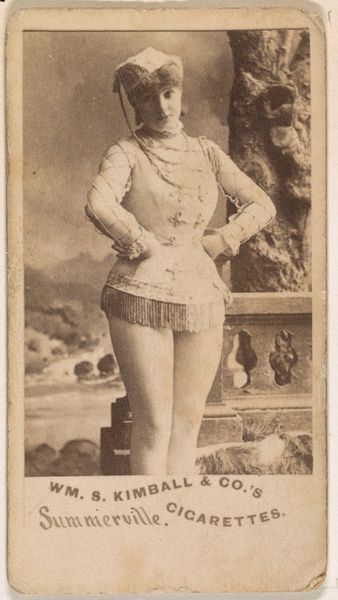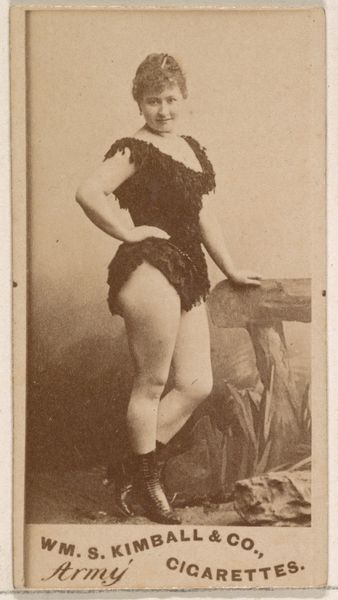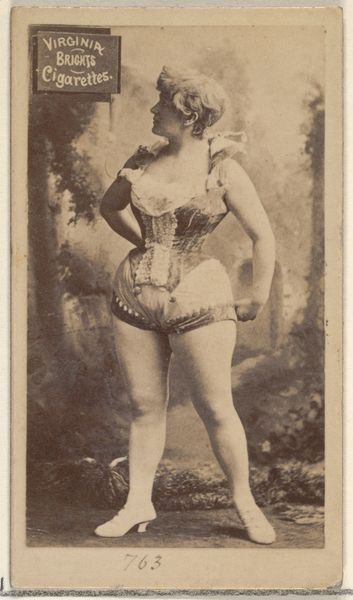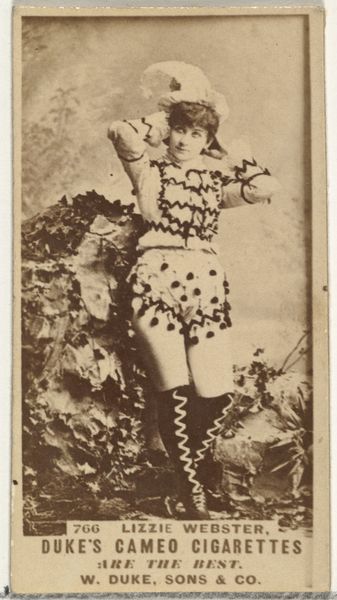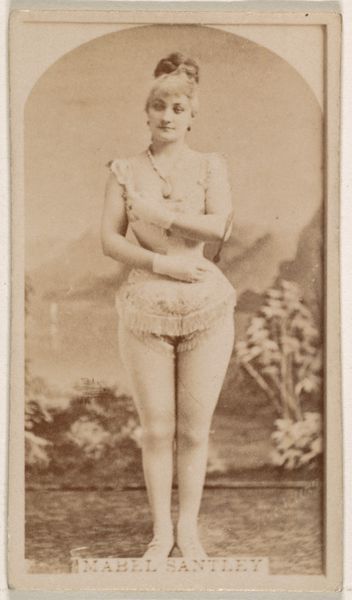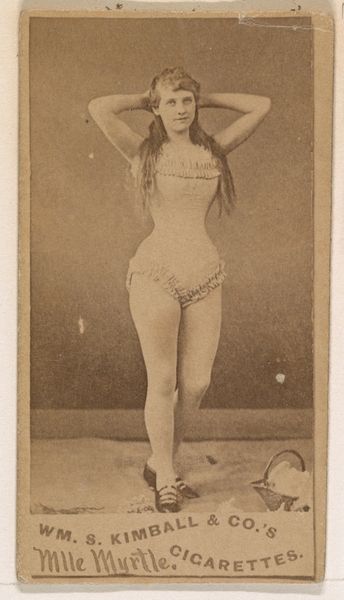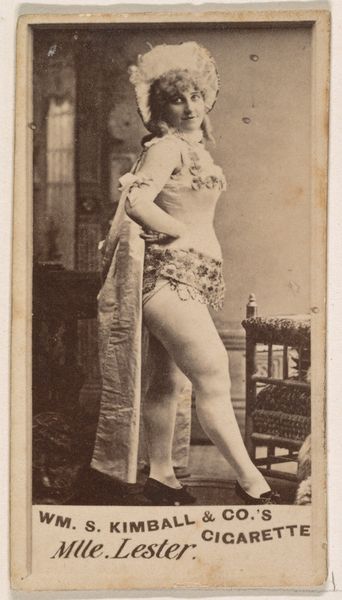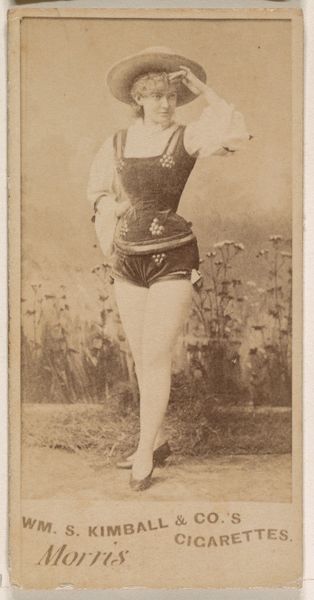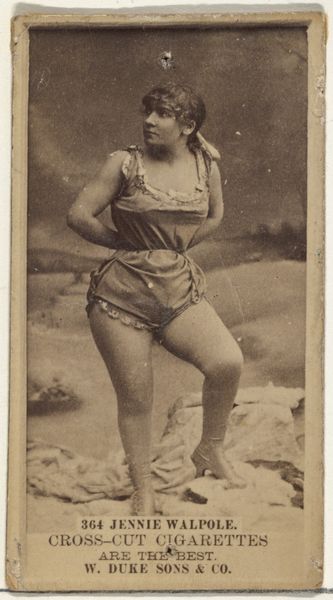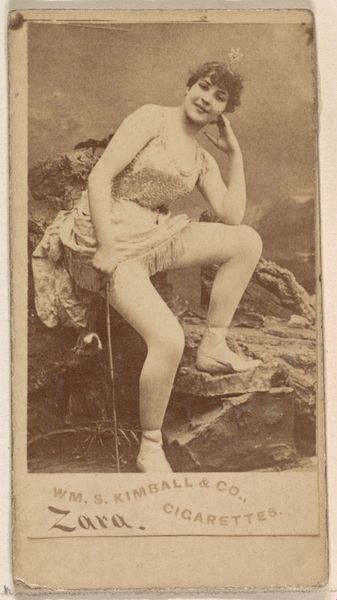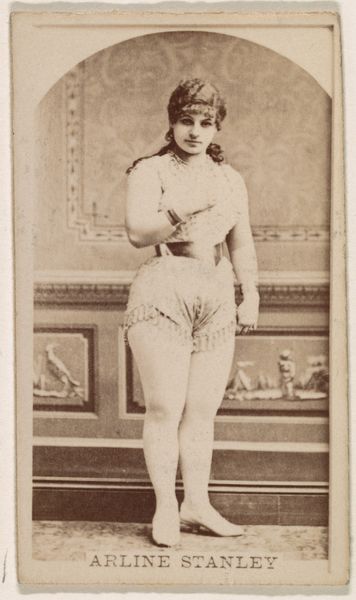
Actress from the Old Judge series (N167) for Old Judge Cigarettes 1886
0:00
0:00
drawing, print, photography
#
portrait
#
pencil drawn
#
drawing
# print
#
photography
#
nude
Dimensions: sheet: 2 1/2 x 1 1/2 in. (6.4 x 3.8 cm)
Copyright: Public Domain
Curator: Here we have "Actress from the Old Judge series (N167) for Old Judge Cigarettes," made in 1886. It appears to be a photograph that was then printed and used for promotional purposes, specifically as a trade card for Old Judge Cigarettes. Editor: Well, my immediate reaction is how staged it feels. The pose is very deliberate, almost artificial, and the setting, with the backdrop and the posing suggests this isn't about candid beauty. What do you make of the material choices given the constraints of the time, Curator? Curator: The photographic printing process allowed for mass production and widespread distribution, making it a smart choice for advertising. Think about it, these were literally tucked into packs of cigarettes. Photography at this point in time also created this bridge between art and the everyday experience of consumer culture. What statement do you feel that the figure makes with the pose itself, especially the suggestive garb she is wearing? Editor: Right. Well, this kind of blatant objectification, although typical of marketing from this era, raises many points of discomfort now, it's really important to note the era in which it was created, particularly relating to women in the public sphere. We see the beginnings of female sexuality being used as leverage, drawing on gender and societal perceptions for pure commerce. What power dynamics are in play, particularly in what seems to be the nude implied with a suggestion of risqué through that time lens. Curator: And let's consider how this impacts her craft and agency. Was this actress actively participating in constructing her image or being constructed by the industry, a reflection of its power to dictate what bodies get to be seen, and at what cost? Also, in what places are these cards seen? We could also add the photographer into that construction: what labor did they go through to build such images? Editor: That's right, it raises some huge questions about visibility, consent, labor, and commerce within that specific moment in time. There are social power structures interwoven between labor, performance and representation. These early examples set the stage for so much contemporary discussions about how women's bodies are marketed for consumption. Curator: Absolutely. The fact that these cards were affordable and easily accessible to the masses meant that images like this were circulating widely, contributing to, if not outright shaping, notions of femininity and desirability. It also shows a link to what gets consumed in that era and time period and that a cultural practice can be seen from an intersectional way. Editor: In closing, the commercial exchange between image, womanhood, and consumption really shows us a very clear picture—one we are still constantly renegotiating, of societal norms of power and sexual politics that affect the role women have been fighting with in society over time. Curator: By understanding these social contexts, it also gives us a much clearer appreciation of the processes and considerations involved in creating this photographic artwork that went into circulation in that period. It is important to revisit to not repeat misrepresentation that society fell prey to.
Comments
No comments
Be the first to comment and join the conversation on the ultimate creative platform.
